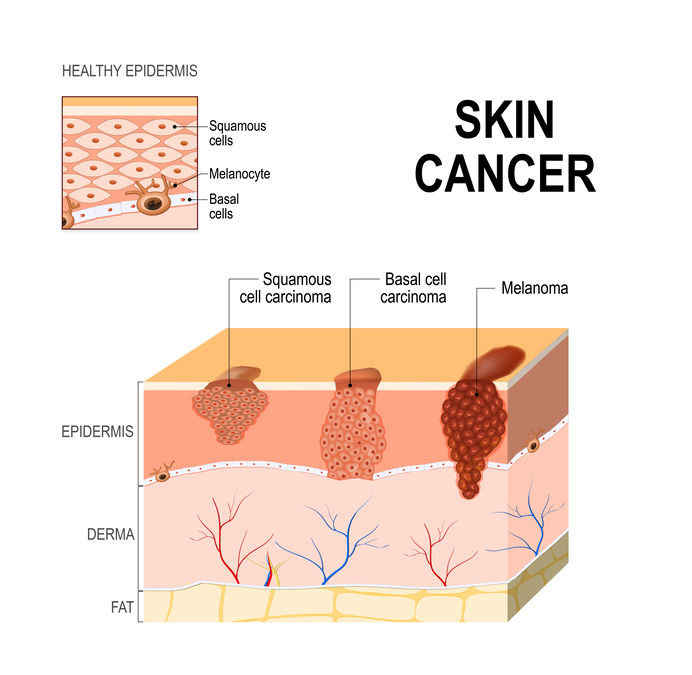Skin cancer is the most common cancer in the U.S. With ultraviolet radiation from the sun as the top cause of skin cancer, many people develop skin cancer over the course of their lives.
There are many different types of skin cancer. Understanding the skin cancer types and the differences between them can help you identify signs of skin cancer and promptly seek treatment.
Types of Skin Cancer
Basal Cell Carcinoma
Basal Cell Carcinoma, or BCC, is the most common type of skin cancer. It’s caused by sun radiation and can be treated easily when it’s caught early in low-risk areas (the torso, arms, and legs).
BCC typically appears as a translucent, “pearly” bump (papule) on the surface of the skin. The surface of the bump may eventually ulcerate and bleed. However, basal cell carcinoma can also have a less typical appearance, making it difficult to identify. It may be missed in physical exams, giving it the opportunity to escalate and become aggressive. This is why it’s crucial to schedule skin cancer exams with highly experienced skin cancer specialists, like the team at The Bowman Institute.
Squamous Cell Carcinoma
Squamous Cell Carcinoma (SCC) is the second most prevalent form of skin cancer. It typically appears as a solid red bump, a sore that heals and reopens, or a rough, scaly patch of skin. SCC most commonly develops on areas of the skin that receive the most sun exposure, such as the ears, face, neck, chest, arms, and back.
Unfortunately, SCC can develop deep within the skin, leading to extensive skin damage and deformity. By catching and treating SCC early on, you can prevent it from spreading and developing deep in the skin.
Melanoma
Melanoma often spreads, making it the most dangerous form of skin cancer. It may grow from an existing mole or emerge as a new dark spot on the skin.
The ABCDEs of melanoma are used to help identify melanomas and differentiate them from regular moles. The ABCDEs are:
- A for Asymmetry: spots that are different on one side than the other
- B for Border: the border of the spot is undefined, irregular, or scalloped
- C for color: a variety of colors in the spot, including tan, brown, black, white, red, or blue
- D for Diameter: melanomas are typically larger than 6 millimeters, but may be smaller when diagnosed
- E for evolving: spots that are changing in shape, size, or color
For a thorough skin cancer exam or skin cancer treatment, contact The Bowman Institute today.

